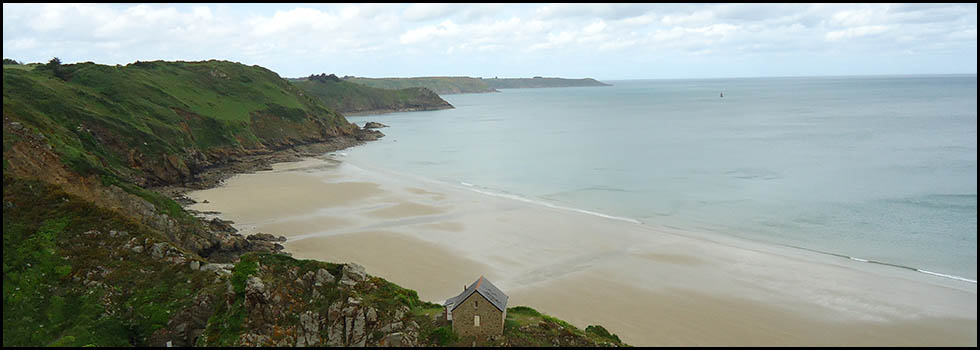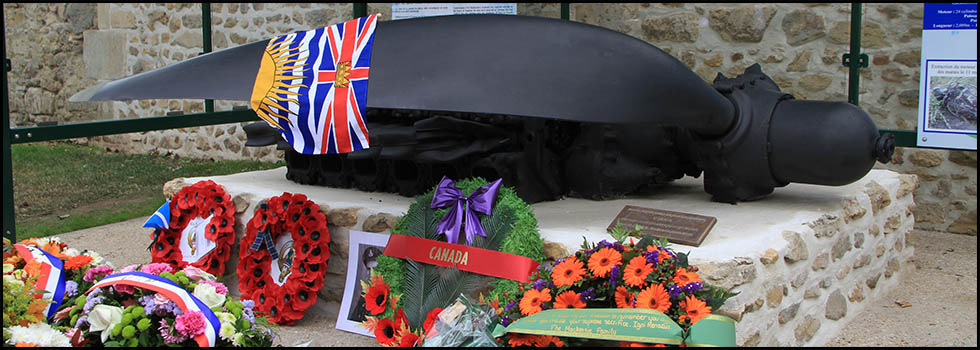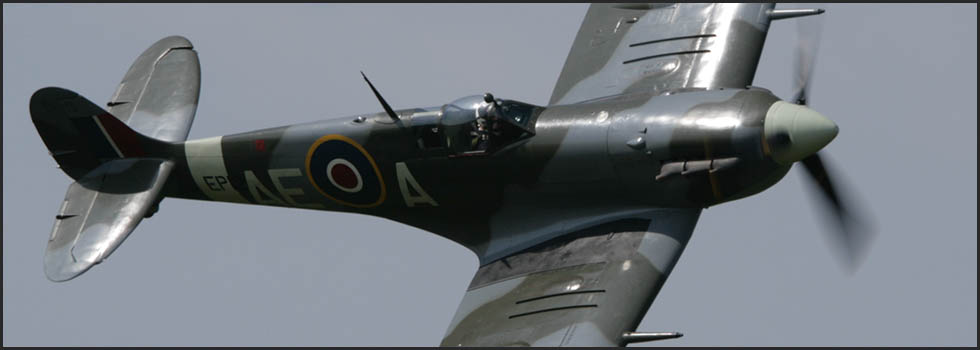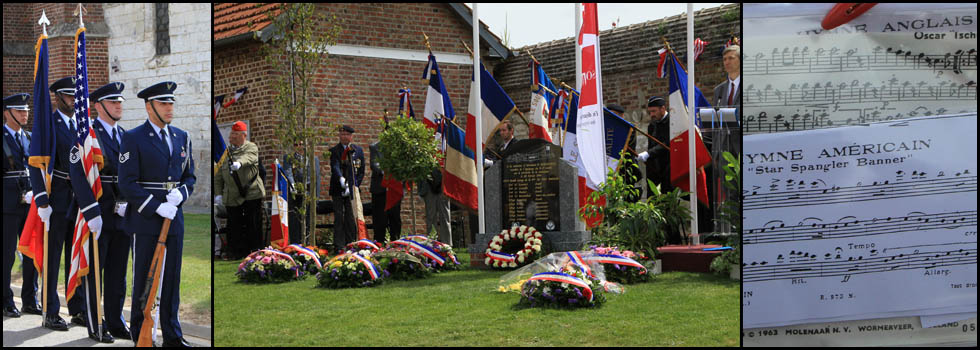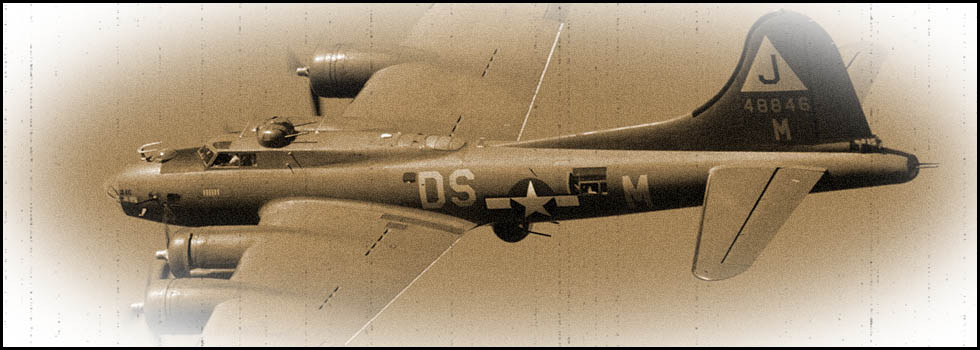2/3 September 1942
Vickers Wellington MkII Z8529
PH-U
RAF 12 Squadron
Léglantiers (Oise)
Copyright © 2023 - Association des Sauveteurs d'Aviateurs Alliés- All rights reserved -
En français ![]()
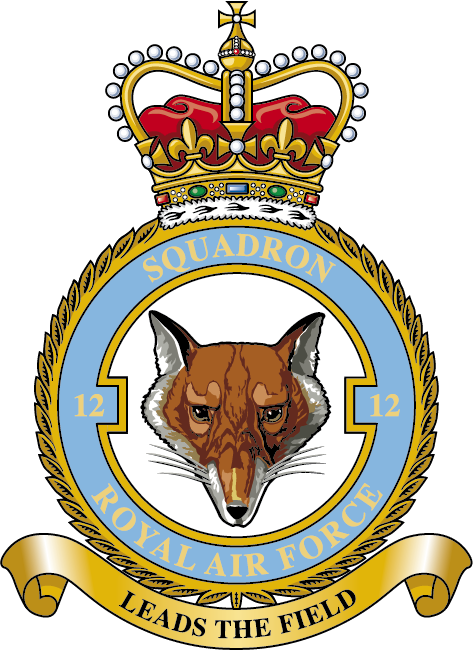
On the night of 2/3 September 1942, 200 Lancasters, Halifaxes, Wellingtons, Stirlings, and Hampdens bombers belonging to various RAF Squadrons took off from their bases scattered across England on a strategic bombing mission. Their target, designated by Bomber Command, was the city of Karlsruhe, Germany, a rail hub and an important port on the eastern bank of the Rhine.
At the time, RAF Bomber Command was applying the doctrine of Area Bombing, which consisted of concentrating bombs on the central districts of cities vulnerable to fires, thereby destroying the population's morale while still achieving industrial objectives. In addition to the explosive and incendiary bombs intended to be dropped on the city, the aircraft's bays also contained, for the first time during this mission, high-explosive Blockbuster bombs weighing over 3 tons each.
Ten twin-engine Vickers Wellingtons from 12 Squadron took off from Binbrook (Lincolnshire) at 10:45 p.m. Among these aircraft was Wellington MkII Z8529. At the controls was a young 22-year-old Australian pilot, Flight Sergeant Colin Albert Alt, who was flying his 13th mission that night.
The crew of Wellington Z8529 :
|
F/S Colin Albert ALT |
Pilot |
RAAF |
|
Sgt. William Burman HOLLAND |
Navigator |
RAF |
|
Sgt. John Innes Montgomery LOGAN |
Bomb aimer |
RAF |
|
F/S Francis Edward MONCKTON |
Wireless operator |
RAAF |
|
Sgt. John Joseph FOLEY |
Rear gunner |
RAF |
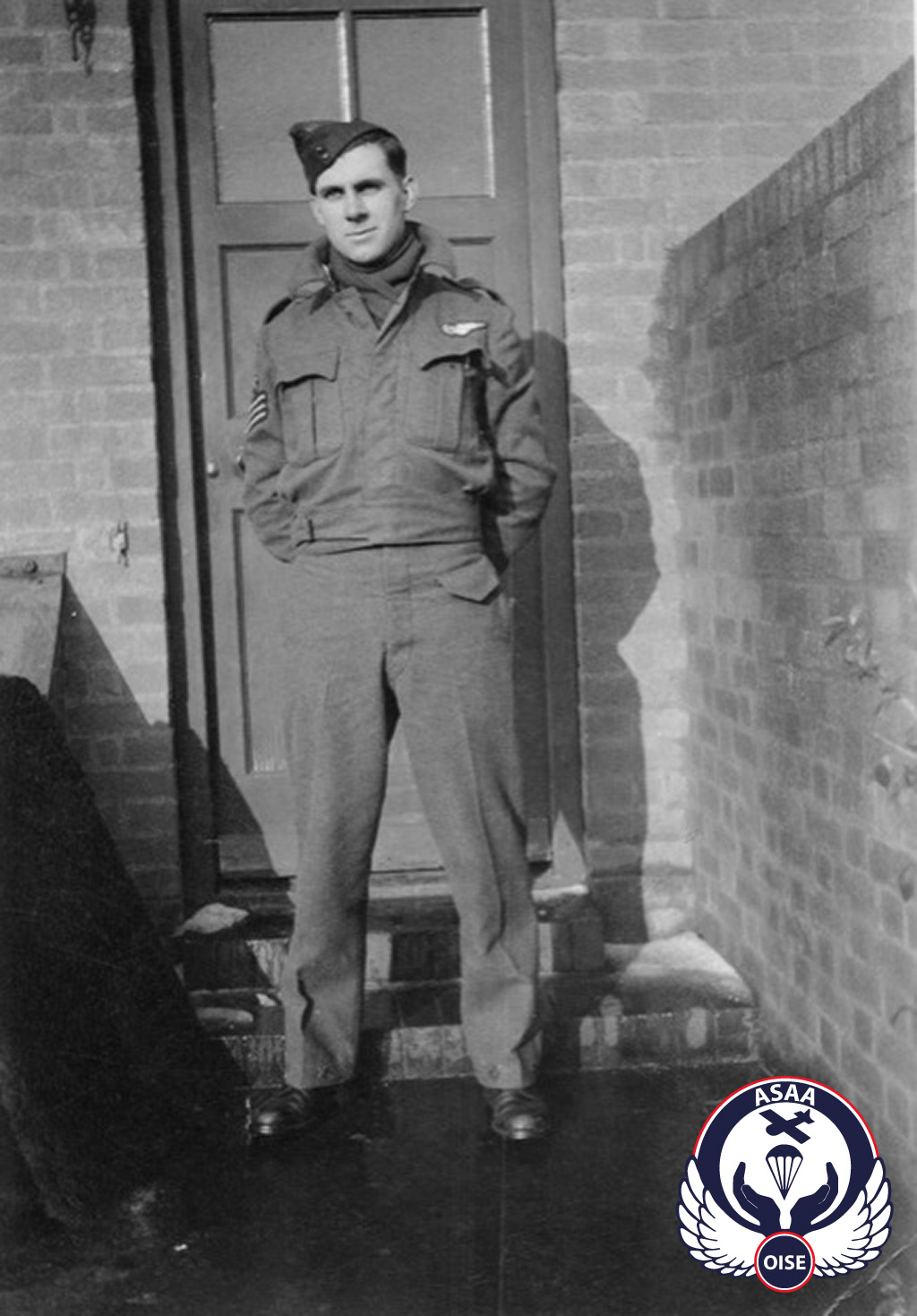
F/S Francis E. Monckton
The attack force appeared over the city around 2:00 a.m. That night, the Royal Air Force applied for the first time a new tactic called the Pathfinder Procedure. Aircraft flying ahead of the bomber formations "illuminated" the target with flares, allowing them to more quickly locate the docks along the Rhine, the factories, and the important railway centre. The bombs were dropped from an altitude of between 13,000 and 16,000 ft. The western part of the city was particularly damaged. This night raid proved to be a success. Photographic reconnaissance showed that the German industrial city was ravaged by more than 200 fires. Their smoke rose to an altitude of 8,000 ft. The attack resulted in the deaths of 73 civilians and more than 700 injured.
During this mission, the Royal Air Force suffered losses. Eight bombers (4 Wellingtons, 2 Lancasters, 1 Halifax, and 1 Stirling) did not return to their bases, falling victim to anti-aircraft artillery or German night fighters.
Wellington Z8529 of 12 Squadron was among the aircraft shot down during this raid. Returning from the mission and heading towards England at an altitude of approximately 9,000 ft, it was attacked over France by a Junkers 88.
F/S Colin Alt, piloting the Wellington, immediately began several manoeuvres while gaining altitude to evade enemy fire. As the bomber continued its climb, almost stalling, the attack ceased. The night fighter had suddenly disappeared. The pilot then decided to spiral his aircraft down to an altitude of 6,000 ft and set a course for England again.
For a time, the danger seemed past until Sgt. John Foley, the rear gunner, reported over the intercom that he had again sighted an enemy aircraft slightly overhead. F/S Alt decided this time to descend to approximately 1,000 ft to avoid detection by the night fighter's radar.
Now flying at a very low altitude, the propeller of the left engine suddenly struck the treetops, immediately causing severe vibrations inside the Wellington. The pilot righted the aircraft and then decided to cut the throttle on the damaged engine, but it was now proving difficult to control the bomber with only one engine. The chances of returning to England were dwindling. The pilot informed his crew to prepare for a forced landing. Under the dim moonlight, fields and wooded areas quickly passed beneath the aircraft's wings.
Finally, F/S Alt crash-landed the Wellington in a field near Léglantiers Wood. The aircraft skidded to the ground, and the front section smashed into some trees bordering the field.
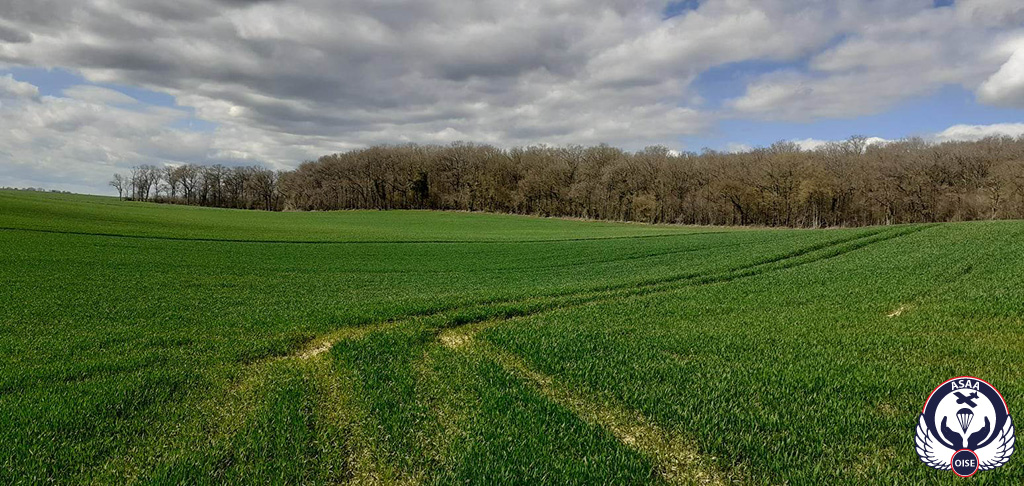
Crash site
The pilot was momentarily knocked unconscious on impact. After regaining consciousness, he managed to escape from the cockpit and discovered the lifeless body of F/S Francis Monckton entangled in the wreckage of the aircraft. He was killed instantly. Sgt. John Logan survived the crash. He was conscious but had one leg immobilized inside his turret. The pilot, still in a daze, tried to free him but in vain. William Holland, despite a broken collarbone, and John Foley managed to escape from the rear section of the aircraft and joined Colin Alt. The aircraft was on the verge of bursting into flames. The three airmen had no choice but to move away and hide in a hollow in the woods. Sgt. John Logan, 19, died a horrible death amidst the flames.
The Germans arrived on the scene about 30 minutes later and discovered the lifeless bodies of Francis Monckton and John Logan among the wreckage. Both were buried by the Germans a few days later in the Beauvais-Marissel cemetery. They still rest there today.
Several hours later, near the crash site, a Frenchman approached the three survivors, advising them to stay put. Someone would contact them before the following night. During this time, they could see German troops coming and going near the wreckage of their plane.
Over the next few days, the Wellington, whose tail section was lying in the field, was completely dismantled by the Germans.
After a long wait, no one came forward. The three airmen finally decided to move away from the crash site. Moving around at night proved difficult. William Holland was in great pain from his injury. A few hours later, they decided to wait until daybreak and discarded their insignia. They had no idea where they were. At dawn, using a small compass contained in their escape kit, they resumed their trek, heading south. They reached a railway line where they encountered two railway workers. The three airmen then learned that they were near Saint-Just-en-Chaussée.
Left to their own devices for several days without significant assistance, they continued to try to head south. They encountered Frenchmen and learned that the Germans were actively searching for the airmen who had fallen in the area. Posters warned the public of the severe penalties they faced if they helped Allied airmen.
Note: In 1942, escape routes were not yet well established. This certainly explains why the airmen did not receive more substantial assistance in our region. Escape routes became much more organized in late 1943 and throughout 1944, when more Allied airmen fell in the department.
On 10 September, having reached the Sainte-Geneviève sector (about 40 km from the crash site), they arrived near a barn and decided to spend the night there. About 30 minutes later, they heard a lorry approaching from outside. Six German soldiers accompanied by an officer appeared and began searching the barn. The three airmen were discovered and captured. (Were they denounced?)
They were taken to an air base (probably Beauvais-Tillé) and then to a prison where they were briefly interrogated. They were then transferred to the Agel barracks in Beauvais for further questioning, giving only their names, ranks, and service numbers. The next day, they were taken to Paris and then transferred to Dulag Luft in Oberursel, near Frankfurt am Main, Germany. In this transit camp, they were held in solitary confinement for one or two weeks and subjected to further interrogations.
In October 1942, Colin Alt, William Holland, and John Foley were sent to Stalag VIII B (redesignated Stalag 344 in November 1943) near Lamsdorf (present-day Lambinowice, Poland). In late January and early February 1945, due to the advance of Soviet troops, they were moved west to Germany, first to Stalag VIII A in Görlitz, then to Stalag XI B in Fallingbostel, where they were finally liberated by the British Army on 16 April 1945, after two and a half years of captivity.
Colin A. Alt never flew another aircraft after the war. He died in May 2015 at the age of 95.
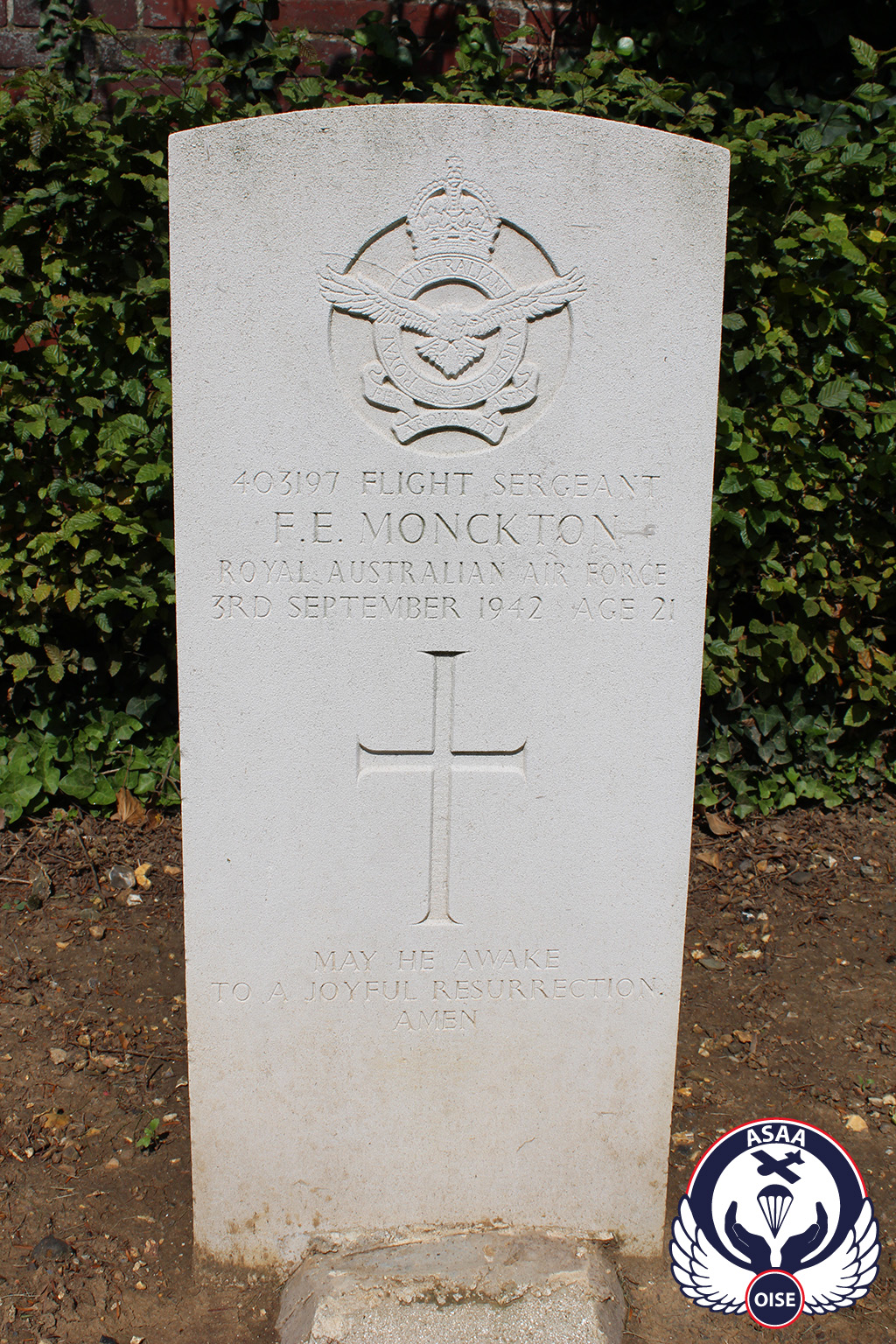
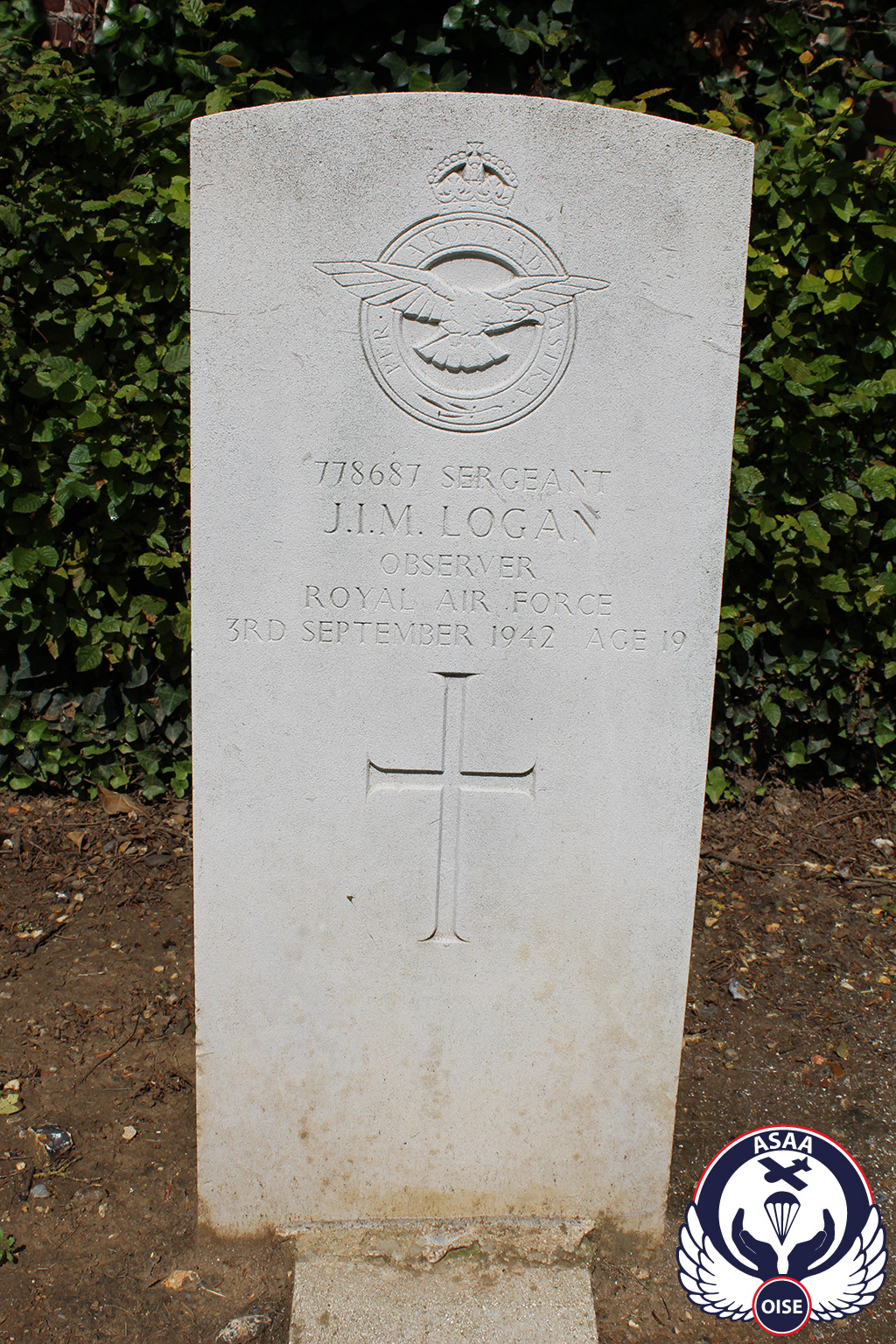
Beauvais-Marissel Cemetery - Graves of F/S Francis Monckton and Sgt. John Logan.
30-31 July 2023 - Visit of Rosalind Brice, daughter of F/S Colin A. Alt.

